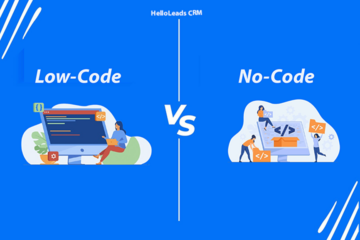
“Increase the TOFU” (not the soy variety but the Top of the Marketing Funnel Variety) “Give us more lead”
We frequently hear this, especially in weekly closing, monthly closing quarterly reviews, and so on.
When company results are falling short of expectations, all of a sudden we find ourselves scrambling to get top-of-funnel leads. Again, we see a high-stress, free-for-all Rumble that is vastly over-rated.
Unfortunately, this way of thinking reduces an extremely complex buying process to something that can be managed at the very bottom of the funnel—sales. This is a truly antiquated strategy that would be ineffective even in the customer-centric corporate climate of 2001, let alone in the 2020s. It assumes that in order for purchases to be made, businesses must simply transfer decision-making authority from customers to sales.
More prospects do not necessarily translate into more sales. Of course, this depends totally on your particular circumstances (marketing strategies, products, industry, etc.), but if I ever hear from a sales representative before doing my research, the likelihood of getting me to discuss any purchase drops below zero (and you can expect some salty messaging about your tactics). Not to mention lead quality; having more leads overall may result in fewer purchasers. As a marketing and sales department, you already have a sizable lead pool of potential customers. Do not just keep stuffing people into lead purgatory. Instead, focus your efforts on validating your offering and developing prospects prior to the point of sale. Better lead management is actually what you need, to express the unique selling points of your company’s goods or services to individual leads at the right time. You can accurately qualify the right people and boost sales rep performance by only sending qualified leads. Lead generation then feeds a well-oiled system that induces customers to make purchases.
Every business is unique, thus audits like these should be tailored specifically for your specific market, clients, and industry. With a few hints here and there on execution, these are the general tactical buckets that should be handled.
Step 1: Study the existing lead process- Revisit your Lead Identifiers and Key Performance Indexes
How do you define a lead? Is it a private conversation? Is this contact in the shopping phase? Is this a known number contact?
Repeat the process to confirm that you have defined the following terms as they pertain to marketing and sales:
- Lead Generation qualified – lead Sales qualified – lead Customer Opportunity
- Upsell potential
- Period or cycle of purchases
- Initial KPIs and benchmarks
A true sales and marketing alignment starts with selecting appropriate prospects to target, establishing appropriate metrics, and developing appropriate sales and marketing execution. Although it’s easier said than done, organizations can achieve genuine outcomes with leadership support and process compliance.
Look at your current lead management procedure.
Does it place a strong emphasis on gathering qualitative data from the employees who work directly with customers in your business?
Get a few key individuals from sales and marketing together, go over your existing lead management procedure, and then write down what both teams think is successful and what isn’t. There’s a good chance the right hand isn’t communicating with the left, and things may be more seamlessly combined.
What are we trying to find?
- Are there any questions that leads would like to have answered before making a purchase?
- Is the pricing scheme unclear?
- Do people desire anything different?
Tips: Existing clients or perhaps some hot leads could be willing to respond to these excellent questions. Set up a survey questionnaire on your website, ping the audience, and learn the truth about the situation. You might also conduct a keyword analysis on your contact us form’s general comments section to determine what people are looking for but are having trouble finding.
The quantifiable metrics from each system, such as dates, sources, lead activities, and sales activity, should be obtained as much as possible. You should also try to map out some of the essential elements depending on the data you have. Query yourself on things like:
- Is the moment to close for a lead as close as we anticipated?
- Do some business sectors seem to be more active than others?
- Are there any particular products or regions where more leads close?
Your thinking should be stimulated by the answers to these queries, which will also act as leading solutions for your next lead management upgrades.
Create a visual representation of your existing lead management process using the qualitative and quantitative lead data you have available. Display the sequence in which customers interact with your marketing materials and the ways through which sales and marketing have an impact.
Step 2: Work backward from the optimal lead profile.
Identifying the optimal lead is the first step in trying to make some changes to the system (and eventual customer). Find the best-converting leads for a specific product using your data, and then describe who they are and what we know about them from a data viewpoint. This could be actual knowledge or aspirational information.
You can now see where you need to go to attract more customers who are inclined to make purchases. This should perhaps highlight any weaknesses in your current lead management ecosystem. What if you require more information on leads that were obtained through marketing interactions and given to sales? What if the demographics of your ad campaigns are incorrect? What if there is a big communication gap and leads are dwindling? Not pretending that everything is running flawlessly is the purpose here; the point is to iterate and enhance your system.
Step 3: Set new objectives and create a strategy to achieve them.

Identify some new objectives you want to pursue. These can be comprehensive platform- or product-specific or more all-encompassing (e.g., increase lead generation year over year). The decision is yours, and the goal is to establish a benchmark you can work toward with your management adjustments rather than necessarily hitting that mark perfectly.
Step 4: Make a plan to address the gaps in content, message, personalization, and other areas.
You’ve put everything together:
- Your present setup
- Your clients and leads
- Your system for selling and promoting
- Your ideal prospects and unfilled gaps
- Your updated objectives
The next step is to develop a plan to improve lead engagement for your sales and marketing teams. This is a case-specific step and has to be dealt with in your use case. You would need a highly specialized strategy for your business, leads, and sector.
The next step is to develop a plan to improve lead engagement for your sales and marketing teams.
When leads search, neither we nor our products come up. Working on content strategy and SEO is essential.
Prospects are unable to tell us apart from our rivals? To lay all that out, perhaps combine a content strategy with a strong email campaign. Getting this portion worked out can be challenging because it is so case-by-case. This is the stage where you can outsource or consult a third party to devise a strategy to go forward.
Step 5: Rework your Automation Processes and re-look at your CRM

No matter the course of action you take, it’s critical to first make any improvements to your systems that operate behind closed doors. Otherwise, there will be chaos. The ability to examine the related software and mitigation mechanisms after mapping out your ecosystem is one of the main advantages of auditing your lead management system.
Before modifying anything on the front end, you should ideally make any necessary alterations to the CRM, automation, or workflow processes. In this manner, the system will be ready when you do make modifications. Everything continues to flow seamlessly.
Your sales cycle can succeed or fail based on how you manage your leads. Sales should naturally follow marketing, which can greatly increase your efforts. At the center of sales and marketing integration, effective lead management is essential for enterprise-scale transactions.
Okay, everything is set up and prepared; all that’s left to do is to press the button. Finally, you may start implementing your plan. Depending on what you think of, it might entail a lot of new content, the addition of new systems, live events, and more. The task isn’t over yet because you’ll need to constantly revise and update to reflect changes in your audience and the market.
This Audit would be a continuous process. Also, research indicates that when you have a dedicated Lead Management person, the quality and efficiency of the Lead Management Process are further honed.
In a nutshell, think about the procedure. A dedicated resource (a person or team) should be assigned to own the lead management effort after conducting an audit. Determine your processes’ weak points and seek to strengthen them, paying special attention to how well sales and marketing complement one another. Contrary to popular belief, concentrating on the sales process rather than producing more leads increases ROI for expanding firms.
Share this blog :












